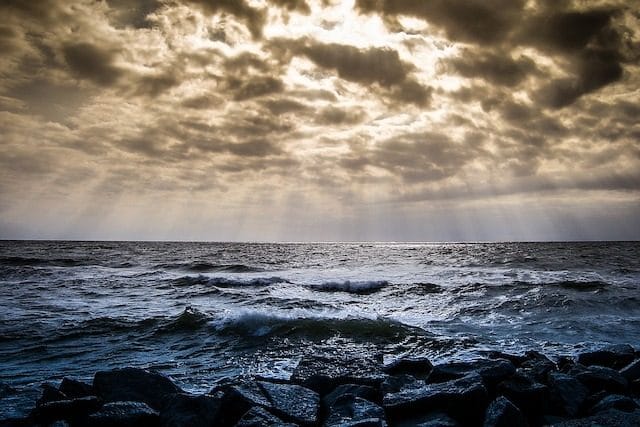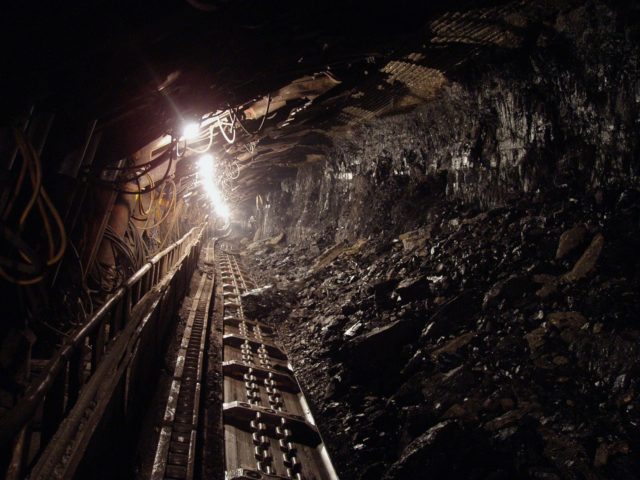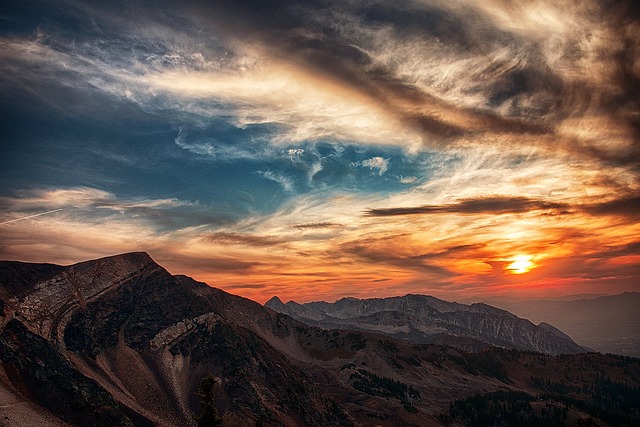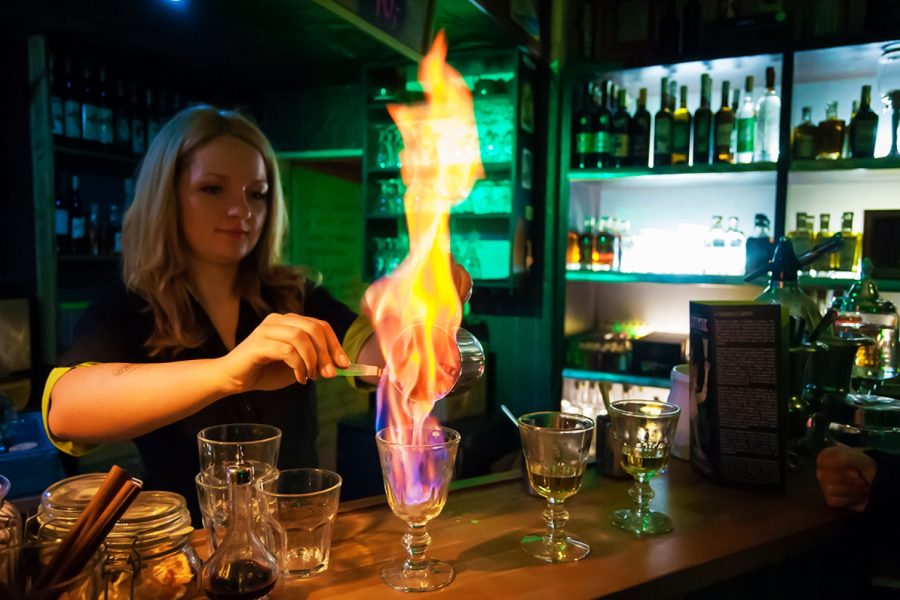Extreme conditions do some pretty weird things to the brain. Here, in order of increasing severity, we look at 10 hostile environments and the disturbing hallucinations each one causes when exposed to them for long periods of time.
10. Jungle

In 1981, Israeli adventurer Yossi Ghinsberg spent three weeks in the Amazon in search of gold. His ordeal was recreated in the film "Jungle " 2017 , but he couldn't fully convey his suffering. In his words , "usually movies are bigger than life. This movie is smaller than life." Not only did he lack the budget and time to show everything, but he could never show Ginsberg's inner feelings.
In addition to the excruciating hunger, the tree-throwing storms, and the skin-burrowing insects, he was also left completely alone when he was separated from his companion Kevin. At night, he hallucinated another man’s voice, desperately calling his name. But the most terrifying vision came on the fifth day, when he was hiding from a half-imaginary jaguar. Out of the darkness, he saw Kevin emerge and look disapprovingly at the remains of his food. “You should share, Yossi,” he whispered, before turning angry. “We both don’t have enough food. So you thought you could get out of here without me?” Then Kevin grinned, picked up his machete, and brought it down on Ginsberg. With that, he came back to reality.
9. Sea

During his 14 months lost at sea, 36-year-old fisherman Jose Salvador Alvarenga was carried 6,700 miles from Mexico while adrift in a small fishing boat. During that time, he drank urine, learned to catch fish by hand, swallowed jellyfish whole, built a rainwater collection system, and salvaged whatever he could from floating trash bags (including food and used chewing gum). Tragically, he also witnessed a fellow crew member die in his arms. Two months later, another fisherman, Ezequiel Cordova, died of thirst and nausea from eating raw seabirds. But Alvarenga was so desperate and lonely that he kept the corpse on board for a week, talking to it and getting it to respond. When he finally released it into the water, it passed out.
As his boat sailed farther out to sea, his ordeal was just beginning. He saw plenty of ships, but none saw him; most were cargo ships with no crew on deck. To compensate for this new isolation, he gave in to his imagination. In the mornings, he paced the deck, imagining that he was “wandering the world.” And he deliberately hallucinated imaginary friends and family. These hallucinations were so vivid that he would later say that during this time he “ate the best food of my life and had the most amazing sex.” When he finally reached land—the southernmost of the Marshall Islands, thousands of miles from any other coastline—he assumed he was hallucinating again. But he almost made it to shore, and was lucky enough to find a couple who rescued him.
He’s far from the only one to experience hallucinations while at sea for long periods. Joshua Slocum, the first man to sail solo around the world, saw Martin Alonso Pinzon, the captain of Christopher Columbus’s first voyage to the New World, aboard his boat. Another circumnavigator, Bernard Moitessier, came on deck to find a man looking at him, then criticized him for sitting there “scratching his ass.” Others have hallucinated while not even at sea, like former Navy diver Rob Hewitt, who imagined he’d wandered ashore to buy a can of cocaine before being rescued from the water.
8. Space

You’d think the novelty of spaceflight would keep the mind free of distractions and fantasies. But hallucinations are common. Described by an ISS astronaut in 2012 as “glowing dancing fairies,” the spontaneous and intrusive flashes and streaks of light have been observed since the earliest Apollo missions. While this little-known nuisance can be ignored during work hours, it can make it difficult to fall asleep. Only recently has the cause been identified. Without an atmosphere to absorb cosmic rays from distant supernovae, “free-floating subatomic particles” pass through the skull and trigger optic nerve cells.
But other types of hallucinations have been reported. In 1976, the crew of the Salyut 5 space station was rushed to Earth when they reported an odor that indicated a fluid leak. The backup crew, equipped with special breathing equipment, realized immediately upon arrival that the smell was imaginary. The olfactory hallucination was attributed to stress and a breakdown in relationships between crew members.
7. Caves and mines

It’s easy to lose track of reality after spending a few days in an underground cave. French caver Michel Siffre deliberately isolated himself in this way to see what would happen to his mind, especially his sense of time. Without any sign of daylight, he says, he couldn’t tell the difference between a normal sleep cycle and the 48-hour cycle he was trapped in: He spent 36 hours awake and the other 12 asleep, with no idea that anything was wrong. Things only get worse as time goes on. Prolonged darkness deprives the brain of the light it needs to function the essential neurotransmitters norepinephrine, dopamine, and serotonin, leading to despair and psychosis. Hallucinations begin within a few hours.
Les Hewitt, a caver who once spent a night in a cave listening to it fill with water, recalls hallucinations and thoughts of suicide. “If I had a gun,” he said, “I’d shoot myself.” In 1963, two miners trapped underground in Pennsylvania experienced beatific visions of heaven. At one point during two weeks of darkness, they said, they were suddenly bathed in light and saw a door open, leading to a marble staircase and the celestial city of angels. They also saw the recently deceased Pope John XXIII smiling down on them.
6. Prison

Some of the most hostile environments on Earth are man-made. Prisoners in solitary confinement often experience vivid hallucinations. It is so common that it has a nickname: “prisoner cinema.” It is a “blind screen of hallucinations” that “forms before the eyes” when “cut off from visual stimuli.”
In the 1950s and ’60s, the US and Canadian governments were thrilled with the idea of using the phenomenon to brainwash their prisoners. At McGill University Health Centre in Montreal, researchers paid college students to spend days in sensory-deprived isolation. Not only did they have to wear translucent visors to minimise visual impact, they also had to listen to the constant white noise of air-conditioning while lying on foam cushions and wearing cotton gloves and cardboard cuffs that extended beyond the visual reach of their fingertips to limit tactile sensations. Within hours, the students were struggling – not least because of hallucinations. They began as “points of light, lines or shapes” and then evolved into vivid, often bizarre scenes, like a procession of squirrels with bags over their shoulders or wearing glasses, walking down the street. There were also auditory hallucinations, including the sound of a music box, and tactile hallucinations, such as the sensation of being shot in the arm. Even after the students were released, they continued to hallucinate — for example, that the room was moving or changing shape.
5. Antarctica

In the 1890s, the Belgian whaling shipBelgica" became trapped in the Antarctic ice, leaving the crew stranded for over a year. Fearing they would lose sight of the ship, they remained on board for the most part, which, while sensible, only accelerated their mental deterioration. As the ship's doctor noted, "murder, suicide, starvation, madness, death by ice, and all the works of the devil [became] common mental pictures."
When summer finally arrived, the crew's hopes that the ice would melt just enough to allow them to sail freely—hopes they had clung to all winter—were suddenly dashed. After that, the psychotic symptoms worsened. One man wondered if he had really been on the "Belgique" ; he had no memory of landing. He also became suspicious of his crewmates, believing they were out to kill him, and spent much of his time in hiding. Paranoid delusions of violence are, oddly enough, common in Antarctic isolation—so much so that in 1928, the American explorer Richard Byrd planned to take two coffins and 12 straitjackets with him on his expedition to the continent. More recently, in 2018, one scientist stabbed another in the chest (for ruining the endings of books).
"Polar madness" is caused by several factors, including circadian rhythm disruption, isolation and conflict. Humans are not adapted to living in such conditions, and even polar inhabitants suffer. The Inuguit of Greenland call itpibloktok .
Another common misconception is “third man syndrome,” in which imaginary expeditioners hallucinate. Sometimes, however, the hallucinations are just silly. British Antarctic explorer Felicity Aston said she was haunted by the smell of fish and chips during her solo journey across the continent. “It drove me nuts,” she said. “It was like I’d been skiing all day past a row of fish and chips shops.”
4. Desert Island

When Leendert Hasenboch, a soldier for the Dutch East India Company, was marooned on an island for being gay, he kept a diary of his mental decline. After the first month, he began hallucinating. He said he was haunted by “devilish spirits,” one of which resembled a man he “knew well” but was afraid to name. Assuming he was being punished for his “sins,” Hasenboch prayed for forgiveness.
It is unclear what happened to him after his journal entries stopped. The last thing he wrote about was having to drink urine and eat raw meat. Although there were two sources of fresh water on the island, he apparently found neither. When another company ship came for him, they found only his camp and belongings. There was no body or skeleton, leading some to believe he had been rescued.
3. Desert

Antoine de Saint-Exupéry, one of the most famous people ever to find himself in the desert, had been wandering for four days when his plane crashed in Libya. His book "The Little Prince" , based on his experiences, is the second most translated book in history (after the Bible). During this time, he and his navigator drank a day's supply of liquid, much of it coffee and wine. Hopelessly lost in the featureless landscape, Saint-Exupéry said that he "simply turned to sand and became a creature without reason." He experienced not only the usual mirages (optical illusions of water that prompt him to walk with his eyes on the ground), but also strange hallucinations, including encounters with imaginary creatures, ghostly processions of lanterns, and the sight of dogs chasing each other. He also imagined himself on a ship bound for South America as a slave, looking up at the mast swinging back and forth against a starry night sky.
In the desert, heat stroke is a contributing factor to hallucinations. Lack of sleep can also be a factor. One runner in the Gobi Desert ultramarathon recalls losing his mind just 30 kilometers from the finish line (out of 250, and in first place). After sleeping for only an hour the night before, he suddenly forgot why he was running; it had simply become his default setting, inexplicably. He called his wife for a reality check and managed to regain his sanity, but lost it again 45 minutes later. “It was just me,” he said. “There was nothing holding me back, I was spinning out of control.”
2. Mountains

Although the so-called "third man" hallucinations of climbers are usually explained by altitude sickness, there is something eerily paranormal about them.
In 2008, Jeremy Windsor was climbing Everest alone and had reached the Balcony (“a cold, windswept snow shelf [26,900 feet] high on the southeast ridge”) when he heard a muffled hello. Behind him – though obscurely, through his oxygen mask – he saw another climber, who introduced himself to Windsor as Jimmy. They climbed together for the next 10 hours, exchanging words of encouragement. Although he didn’t follow him, or even see him, he was always aware of his presence. He could hear Jimmy’s crampons scraping the ice, the rush of oxygen into his mask, and feel his weight on the safety line they shared. Then, as they reached the Hillary Step, the final ridge before the summit, Jimmy said “hooray” and disappeared.
Such encounters are often reported by climbers who climb to high altitudes. Because they are associated with the “death zone” altitude, it is thought that they may be a survival mechanism. Another climber saw not one, but two people walking towards him as he was descending the mountain, exhausted and lost. It was night, so he only saw flashlights, accompanied by a sense of salvation. This lasted for three hours. Although he was distraught that he could not contact these people, hope kept him going. And they only disappeared when he finally found his tent.
1. Underwater

Nitrogen narcosis, also known as "deep rapture," occurs when pressurized nitrogen enters the bloodstream. It affects the central nervous system of divers descending beyond recreational depths, causing disorientation, confusion, euphoria, and sometimes hallucinations.
This is especially common in freediving, “the only sport,” as one diver put it, “where athletes get drunk at the most critical moment of their performance.” Experienced divers call it “the junkie.” One recalls seeing imaginary colors with nothing else to focus on, and how closing his eyes created a pixelated visual effect. Even stranger, he had an out-of-body experience, seeing himself descending from a third-person perspective. Other divers have reported seeing fractal patterns, as well as figures and faces.
Although the condition is reversible, it can impair a diver’s ability to recognize the need to surface, which is especially problematic when diving alone. But hallucinations can also cause communication problems between divers. One diver recalls writing something in plain English on his board, only to have his dive buddy look at it and shrug, indicating he didn’t understand. It wasn’t until they returned to the surface that the diver who wrote the message realized that what he thought was written in English was actually “gibberish.”













Оставить Комментарий